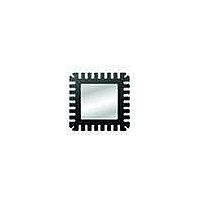ATA6830-PKHW Atmel, ATA6830-PKHW Datasheet - Page 11

ATA6830-PKHW
Manufacturer Part Number
ATA6830-PKHW
Description
Motor / Motion / Ignition Controllers & Drivers IC Automotive for Headlamp Adjustment
Manufacturer
Atmel
Type
2 Phase Stepper Motor Driverr
Datasheet
1.ATA6830-PKHW.pdf
(24 pages)
Specifications of ATA6830-PKHW
Product
Stepper Motor Controllers / Drivers
Operating Supply Voltage
7 V to 20 V
Supply Current
7 mA
Mounting Style
SMD/SMT
Package / Case
QFN-28
Lead Free Status / Rohs Status
Lead free / RoHS Compliant
3.7
3.8
4575D–BCD–09/05
Reference Run
Cruise Control
In normal operation, new position commands are transmitted as absolute values. To drive the
stepping motor to these absolute positions, the circuit has to know the motor’s zero position.
Therefore, the stepping motor has to perform a reference run after each power-up in which it is
extended or retracted to its limit stop. Before the execution of the reference run, the motor is
supplied with hold current.
As the actual position is not known at the beginning of the reference run the whole position
range has to be passed. To optimize performance for smaller actuators, the reference run has
been reduced to 698 steps. Therefore, it is prohibited to access positions higher than 698,
because in a following reference run the stepping motor would not reach its zero position.
If it is necessary that the entire range up to position 1024 can be used, the reference run has to
be executed twice. Since any command during reference run is ignored, the second reference
command has to be sent about 2.4s after the first command.
To avoid any possible mistake, e.g., the loss of a step during the reference run or the bouncing
at the limit stop, there is a special run to be executed.
This is shown in
Table 3-2.
The travel operation control independently moves the stepping motor into its new position. To
reach the new position as fast as possible but without abrupt velocity changes, the stepping
motor is accelerated or slowed down depending on the difference between actual and nominal
position. If this difference is huge the stepping frequency will increase (acceleration). When the
new position is nearly reached, the frequency will decrease again (deceleration). In the case of a
new nominal position opposite to the direction of the motion being from the microcontroller, the
stepping frequency will decrease to its starting value (300 Hz) before the direction can turn. The
cruise control is shown in
The possible stepping frequencies for velocity control are shown in
Phase
VII
IV
VI
III
V
II
I
Set current to hold current; normal operation
Action
Ramp up to 446 Hz step frequency
Drive at constant speed
Ramp down to minimum step frequency
(303 Hz)
Wait for 6
Perform another 6 steps with 3300 µs
Wait for 5
Reference Run Course
Table
3-2.
3300 µs with the last coil current
3300 µs with the last coil current
Figure 3-9 on page
12.
Drive
through
the
whole
range
(698
steps)
Table 3-3 on page
Int. Counter
700 to 11
varied
7 to 6
5 to 0
704
703
702
701
10
9
8
6
0
ATA6830
Steptime
3300 µs
2895 µs
2540 µs
2240 µs
2240 µs
2240 µs
2549 µs
2895 µs
3300 µs
3300 µs
3300 µs
3300 µs
varied
12.
11













